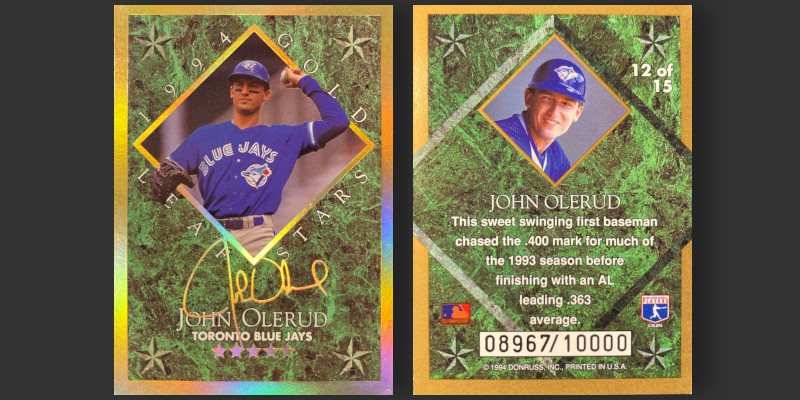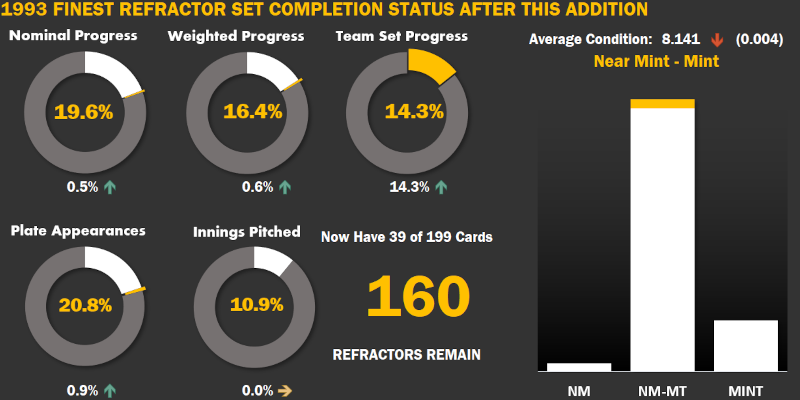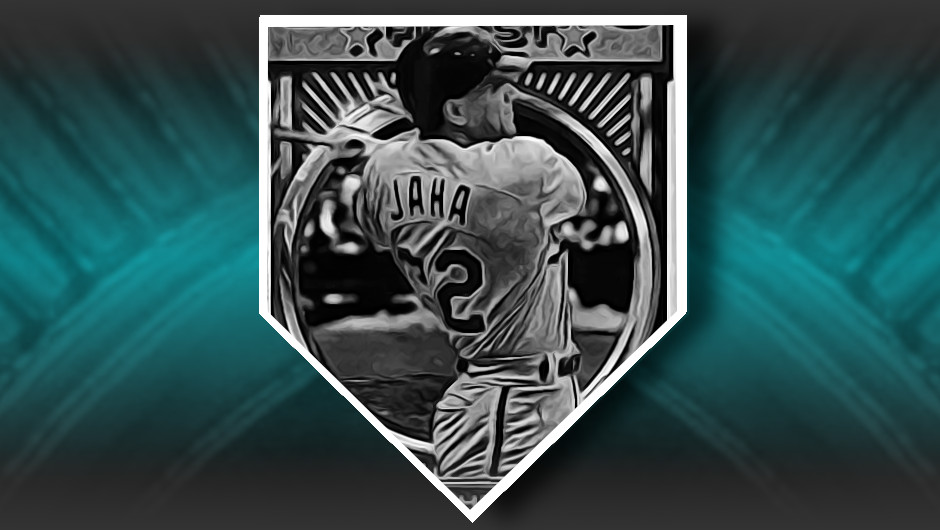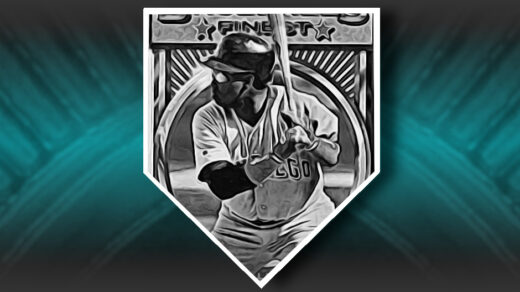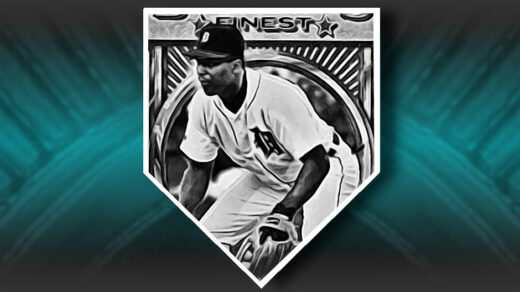John Olerud always stood out in baseball. He was a two-way star in college, slugging .876 one year while pitching a perfect 15-0 record. He wore a batting helmet both on offense and defense due to the potential of reigniting a brain aneurysm that nearly ended his life in 1989. When he joined the Toronto Blue Jays at the outset of the 1990s, he drove in runs in the mold of a classic hitter rather than the home run monsters that were beginning to dominate the sport.
Yet, for all that was so different from other players, Olerud began to blend into the background. If asked who the greatest player of the decade was for the Toronto Blue Jays, fans are likely to mention a few other players before coming around to his name. The same goes for the New York Mets, which Olerud was traded to and had his most productive seasons. In both cases it can be argued that he was the team’s best player despite only playing out part of the decade with each.
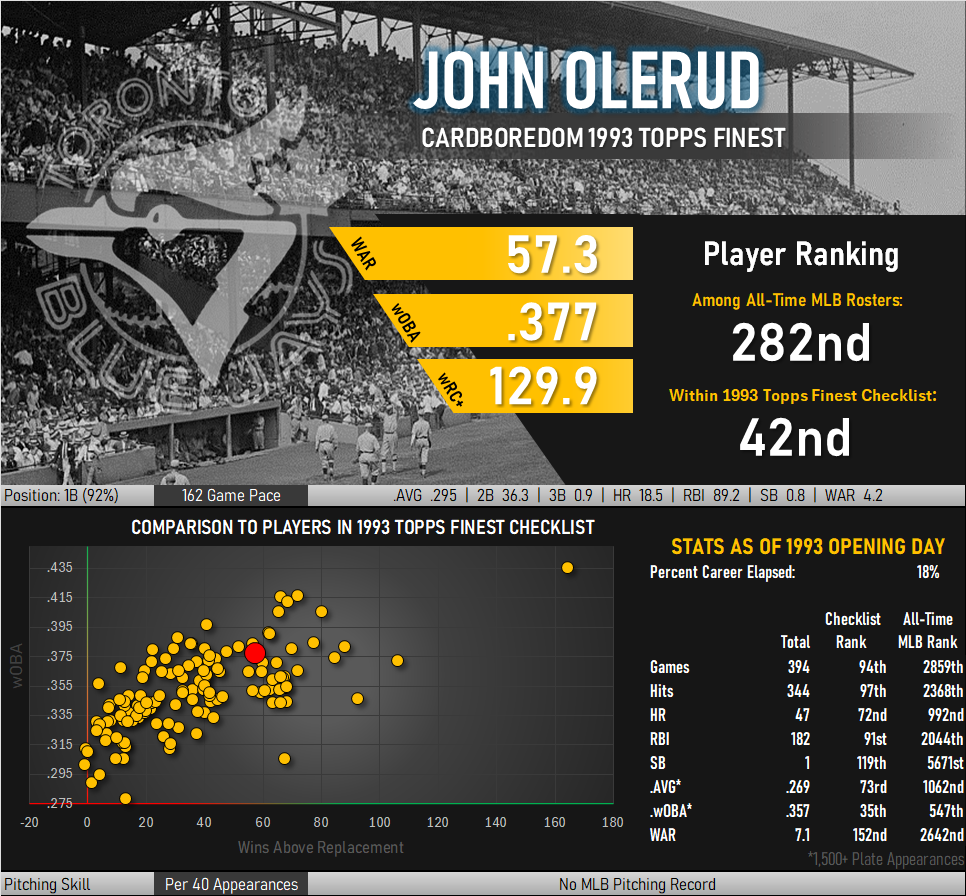
Toronto Blue Jays
The Blue Jays have been around long enough, 44 years at this point, to accumulate a respectable all-time roster of players who donned Toronto jerseys. Carlos Delgado and Jose Bautista come to mind as premier Jays players. Bautista is a more recent addition to the team, having played 2008-2017, but Delgado traces his roots back to the Championship teams of the early ’90s. Despite hitting nearly 500 home runs and slugging .546 for his career, Delgado is not the best Toronto player of the decade. John Olerud earns that honorific as judged by Wins Above Replacement (WAR).
Olerud played seven full seasons with Toronto in the 1990s, generating 23 wins above replacement in that span while making a competitive run at a .400 batting average in 1993. Delgado produced 11.4 WAR through the end of the decade, well behind Olerud’s total. No other position players come close despite Toronto making it to a pair of World Series appearances early in the decade. Olerud’s yearly average of 3.3 wins is ahead of Hall of Famer Paul Molitor (3.1/year in Toronto). Current Toronto star Vladimir Guerrero, Jr. made a run at the Triple Crown this year and finished with 6.7 WAR, a figure that Olerud surpassed by nearly a game and a half in ’93. Olerud was the Blue Jays incarnate for the ’90s.

New York Mets (1997-1999)
The Blue Jays traded Olerud to the New York Mets in exchange for a middling pitcher named Robert Person. Person brought the Jays an 8-13 record with a 6.18 ERA across a little over two seasons. Olerud played out the remaining years of his contract in New York where he became the team’s best hitter of the decade, despite only appearing in three seasons.
Olerud generated 18.3 wins above replacement in his three Mets seasons, including 1998 when his 8.1 WAR fell just short of Barry Bonds’ 8.5. Olerud was everything the Mets hoped for in this period and when it was over he had accumulated more wins above replacement than any other Mets position player in the decade. He eclipsed the production of famous Mets like Bobby Bonilla and the ’80s contributions of Gary Carter and Lenny Dykstra. He averaged more annual WAR with the Mets than fan favorites Darryl Strawberry, Mike Piazza, Howard Johnson, and David Wright. With that in mind, Olerud should certainly be in the conversation for best Met of the 90s.
